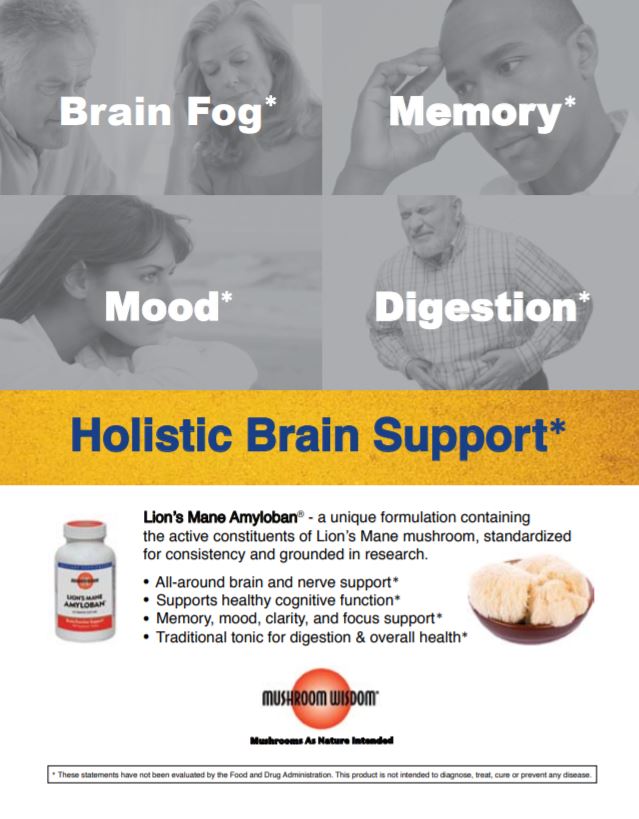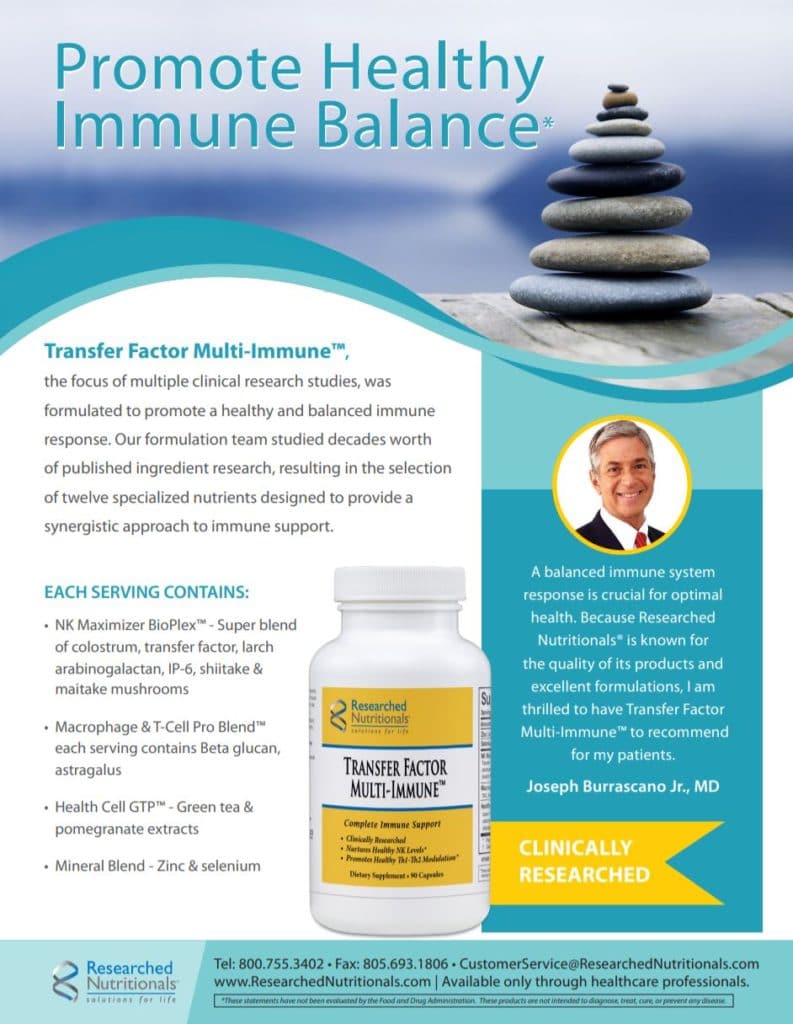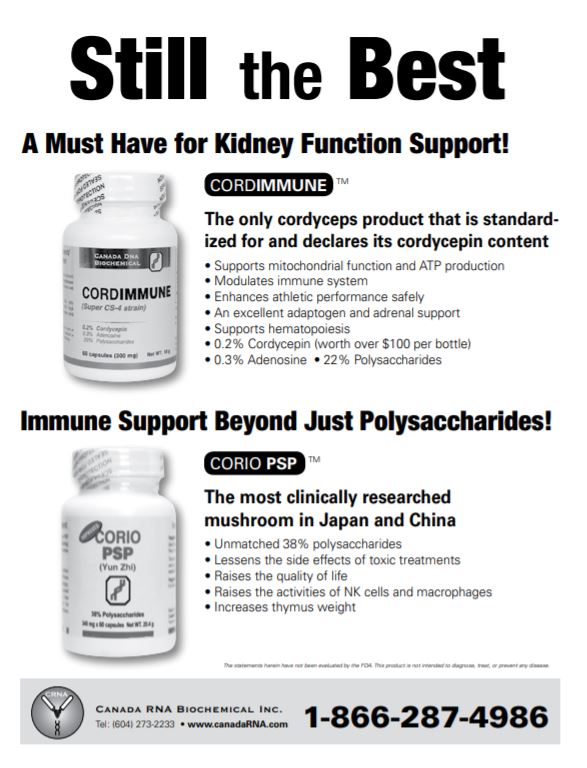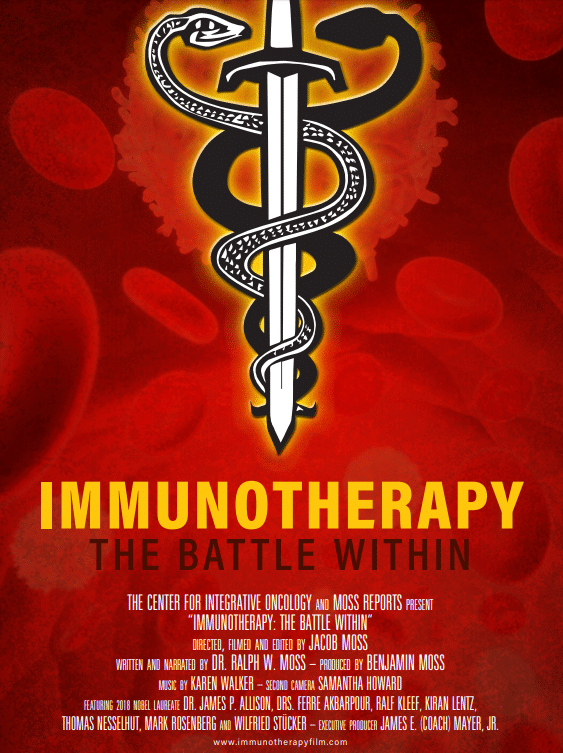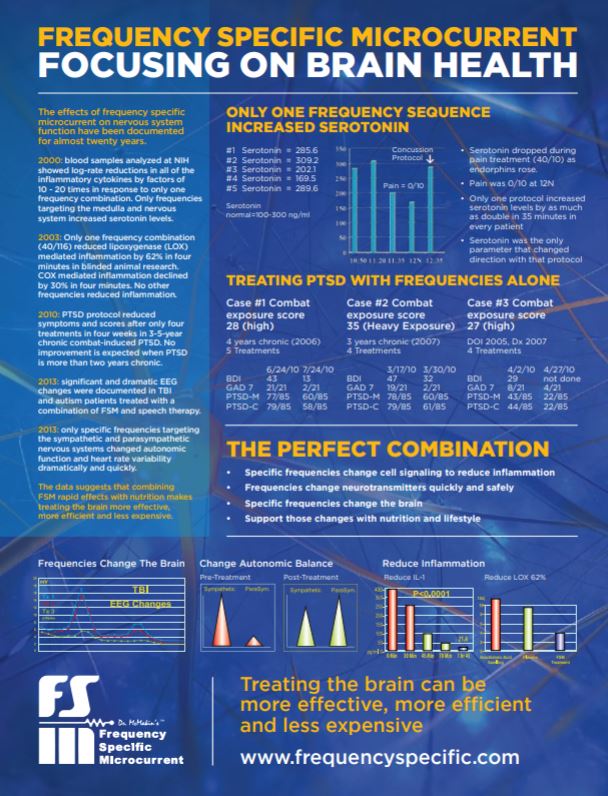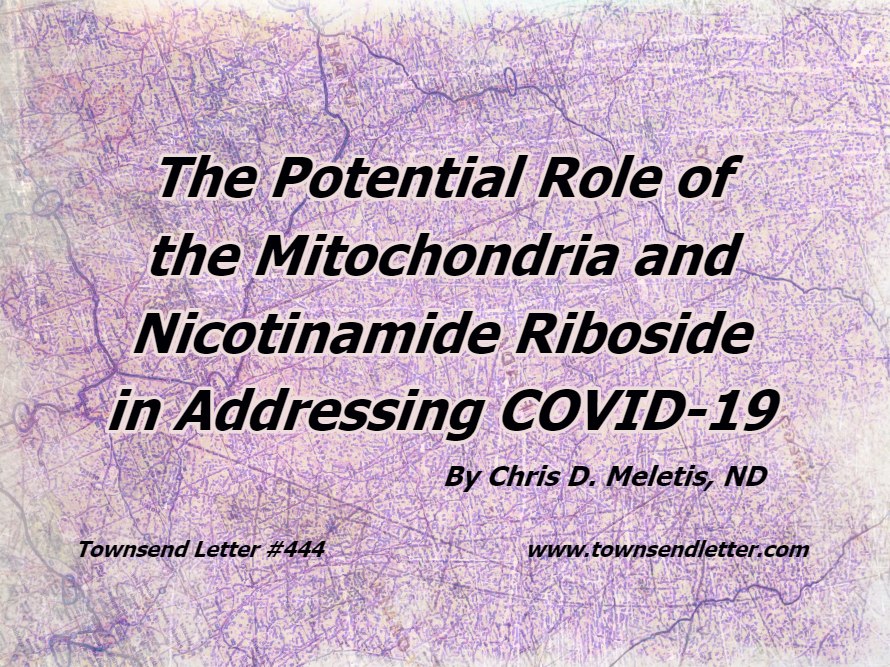By Margo R. Roman, DVM
Introduction
Modern medicine, both human and animal, acknowledges the need for a well-functioning microbiome to help protect the immune system and maintain health. Recent research indicates that a great deal of immune response derives from the gut.1-6 This research supports the claim that medical conditions may arise from damage to the microbiome.7-13 An individual may struggle with gastrointestinal (GI) issues, allergies, and a weakened immune system after exposure to antibiotics, other drugs and chemicals, environmental toxins, and a poor diet.14-18 Can we regenerate immune strength from that weakened condition? Evidence is now growing that such damage may be ameliorated by fecal transplantation, and this therapy, while still in its infancy, is being increasingly acknowledged in both human and animal medicine.19-28 In the near future, replenishing the GI tract with beneficial symbiotic gut flora that have supported the donor with good health may be the way we will treat many diseases.
In 2012, this author coined the term, “microbiome restorative therapy” (MBRT), as opposed to the customary term, “fecal microbiota transplantation” (or FMT), to better describe what the therapy actually does: restore the microbiome. This term was first published in articles by this author in 2014 and 2015.22,29 Some clarification may be in order regarding this change in terminology. The term “microbiome restorative therapy” can be considered a more palatable and accurate description of this restorative process, especially as defined and practiced by this author’s clinic. Also, while fecal transplants have been used in humans and farm animals for years, until recently this therapy had not been used in small animal medical care. MBRT was developed at Main St. Animal Services of Hopkinton (MASH) for small animals and involves an explicit, prescribed, holistic protocol not found in descriptions of FMT (see Appendix I). In fact, this therapy is now being followed in a growing number of holistic veterinary practices.a The term “Microbiome Restorative Therapy” and its acronym MBRT are increasingly referenced in veterinary information blog posts and YouTube presentations, and now at least two peer-reviewed veterinary publications.30-36, 73 These terms are regularly included in veterinary and microbiome conference lectures and discussions and, in various veterinary contexts, seem to be accepted as standard nomenclature.b
The novel and interesting observations we have made of the behaviors of many of the animals to whom we have administered MBRT are among the numerous positive possible outcomes of fecal transplants. What we have witnessed in our veterinary clinic, read in related credible reports, and have been informed about by our clients and others are intriguing and distinct behavioral or even personality changes in MBRT recipients. While we do not know why these behavioral changes occur, we posit that microbiome restoration appears to be at least in part responsible for this effect. This paper offers a viewpoint based on these clinical observations, some scientific reports, and the personal observations of others, and asserts the opinion that this therapy is worth developing further, not only for its physical healing qualities, but also for wider observation and documentation of accompanying behavior and personality changes. A better understanding of the role the gut plays in emotional and psychological well-being is timely and needed and can inform the possibility of incorporating fecal transplants in behavioral therapeutic approaches for animals as well as humans. The “One Health” concept is a relevant paradigm from which to approach this issue. Recent research regarding the direct relationship between the gut and the brain sheds more light on this very topic.37-39 These kinds of studies seem to validate earlier clinical observations on the gut/brain connection, and more analysis can lead to continued illumination on this topic.
Holistic practitioners recognize that there are inherent limitations with double-blind, placebo-controlled studies, and that an integral part of gathering widely usable data is the inclusion of clinical reports, which often emerge first from informal clinical observations. From the perspective of an integrative veterinarian who has practiced for over 40 years, this author and her clinical colleagues have observed an added dimension of mental health and behavioral improvements within just a few hours or days of this novel treatment, and appreciate this as a significantly different consequence than the typical positive outcomes of other holistic treatments. This paper presents a unique viewpoint based on such novel clinical observations, a first step toward formulating a new hypothesis as well as formal case studies.
Relevant Human Cases
Accounts in several published articles, both scientific and subjective, and at least one book describe effects in some organ transplant recipients in which they seem to suddenly take on emotions and characteristics unlike their own, but very similar to those of their donors.40-45 This effect has been documented in heart, lung, kidney, liver, and other organ and body part transplant patients (although the most dramatic and long-lasting effects seem to occur with heart transplants).46,47This intriguing side-effect of organ transplants raises interesting questions regarding the nature and mechanisms of some kind of cellular memory that would generate such changes. Likewise, when we hear compelling subjective accounts of similar personality changes after fecal transplants in humans, the resulting questions become even more profound (see Conclusions below). It is not meant to be construed from this paper that all human cases of FMT will result in personality or behavioral changes; but these changes may be possible and should be inquired about by medical personnel shortly following FMT administration in humans.
It is this author’s opinion that providing this information regarding behavioral effects in humans as a result of fecal transplantation is an important segue to any discussion of analogous responses in other mammals who cannot explain in words what they are experiencing. For the purposes of this paper, very brief summaries of these effects from human FMT are as follows, from patients who learned only minimal information about their donors at the time they were given the transplants, which, if any bias were present, does not seem to account for all of the responses each have described. In the case of humans, it is possible that placebo and “honest placebo” effects could have played a role in the improvements reported here.48 However, the effects reported by humans are similar to those observed in animals, in which placebo effects are not applicable. Just as reported human effects are helpful in understanding the effects in animals, observed effects in animals can serve as a partial validation of reported human effects.
Ms. M. A 35-year-old woman, a client of this author, had an autoimmune disease with a lot of gut issues. She became worse after expensive treatments with a conventional specialist. Alternative support was not improving her the way she had anticipated. She then read about fecal transplants and wanted to try this therapy. Because she did not have Clostridium difficile, she was not approved for this procedure as, in the United States, the requirement is for three episodes of C. Difficile to qualify for insurance coverage, and doctors would therefore not perform the therapy for her.c However, she eventually found a doctor who was doing a transplant research project. This doctor gave her one treatment in an office visit and subsequently mailed her two more capsules at different times for a total of three treatments.
The first transplant was from a screened and tested very happy, healthy, athletic 11-year-old girl who had been raised in a clean environment, was never on antibiotics, and ate only an organic whole food diet. In recounting her experience, Ms. M said she felt really light afterward, felt very happy and almost care-free. She attributed this significant change in subjective feelings to the addition of a young, healthy microbiome. After a while, this euphoric feeling faded, but she still felt much better than before the transplant. When she received the second transplant, it was from a 25-year-old woman, and while she did feel stronger physically, she had no significant change in emotions, positive or negative. When she later had the third transplant, she knew it was from a screened and tested healthy male but that is all she knew. That night and for the next few days she said she was sweating copiously, and her body odor was that of a man, which she intensely disliked. She was also up all night feeling much stress, anxiety, and upset. Ms. M contacted the doctor to find out if this was a normal reaction. The doctor had never seen this kind of reaction with this donor he had used many times but disclosed that the male donor was a body builder and he had just broken up with his girlfriend and was quite upset. Was the transplant responsible for these intense physical and emotional effects, as this patient thought was the case? This woman’s health has improved but she has not been able to retain her microbiome balance for long periods of time. This is most likely due to the immune endocrine imbalance (atypical cortisol estrogen imbalance syndrome [ACEIS]) with which she was diagnosed [see Appendix II below]). Therefore, she is still seeking other ways to strengthen her microbiome as she realizes how it affects all of her.
Mr. G. Another client, a 43-year-old man, recently submitted a written testimonial regarding his own positive emotional and other effects as a result of fecal transplantation. This man described himself as suffering since childhood with “an undiagnosed mental/emotional condition” in which “my thoughts and emotions seem different from what is reality” and “my emotions become my new reality.” After many years of seeking relief through alcohol, psychiatric treatments, and pharmaceuticals, all of which did not work well for him, he was able to start FMT treatments. He reported that he noticed an immediate change in his patterns of thinking, which allowed him to have better perspective and control over the destructive emotions. This change has also enabled him to seek other ways to further support his mental health as well as to follow a diet that will support a healthy microbiome. He said the effects of MBRT last about two weeks, when some of the racing thoughts and other symptoms start to return. He stated in writing, “When I am consistent with doing the fecal transplants, my life, career, and relationships are AMAZING.”
Mr. G offered a log of a recent transplant experience with a 12-year-old girl donor who is a gymnast and trains hard. He immediately felt a shift in his energy and felt very relaxed. He slept well that night and recalled dreaming of Barbie dolls. At the gym the next day, he noticed his reaction to some parts of his workout had shifted, and that some of his movements were different. After another transplant from the same donor, he reported feeling more comfortable with other youngsters with whom he had been working, while playing games with them. That evening, he mentioned to his wife how he feels like a different person after his transplants, and then “thanked God for showing me what my life can be like when I’m doing fecal transplants and when I am balanced in my brain.”
Doris. Another case is that of a personal friend who was 86 when she endured two hospitalizations for C. difficile that almost killed her each time and left her with severe abdominal constipation pain, resulting in her inability to take her Parkinson’s medication, which then resulted in an increase in Parkinson’s symptoms and loss of mobility. She was on almost continuous antibiotics for urinary tract infections (UTIs) and was incontinent. Her family had determined that she needed to be in a nursing home as she had lost a lot of her mental capacity and appeared confused and demented.
When FMT was first suggested to this family, their reaction was disgust with the idea of this “gross procedure.” After 15 months, the family finally decided to try FMT to see if this might correct her C. difficile overgrowth. Medicare will not allow FMT until there have been three separate hospitalizations for C. difficile.c Doris was hospitalized only twice for C. diff, almost dying the second time, and stating she did not want this treatment again and would rather die. This author suggested the family pay out of pocket to get FMT because another hospitalization could weaken her more and could cost Medicare $30,000, based on the bills from her prior hospitalizations. Family members called around: Cedar Sinai in Los Angeles, California charged $9,000, Mayo Clinic in Scottsdale, Arizona charged $6,000, and Scripps Institute in San Diego, California charged $750. Doris went to Scripps where it took five minutes to complete the treatment with a nasal-gastric tube. The donor sample came from Open Biome in Medford, Massachusetts (www.openbiome.com). Open Biome screens their donors and at the time of this writing has sent out tens of thousands of transplant samples.
After five days, Doris could feel a big difference. Her stools were becoming more normal, and she could take her Parkinson’s medication. D-Mannose was added to help her bladder infections and to keep her off antibiotics. She also said she actually could think a thought through. Five weeks later she was walking at the mall with her friends, with a stronger bladder, feeling so much better, and with much greater mental acuity. By five months after the FMT she had regained all her brain capacity (“thinking like I was 50 years old again”) and looked 15 years younger to the people in her life who love her. We do not know the age of the donor, but her GI problems stopped and her chronic UTI was gone. Her demeanor became happy and upbeat and her mental clarity returned. She had no need for a nursing home and was able to live independently. Doris has reported more than once that she is certain that she would have died had she received another round of conventional antibiotic treatment in the hospital, instead of receiving FMT. Now at 90 years old, she has fully maintained her physical and mental abilities, her Parkinson’s symptoms have improved, and she has so much energy that she runs the activities center in her retirement community.
Animal Cases
Observations of behavior changes in animals usually occur within hours or one-to-two days of MBRT. The following are brief observational accounts of chief behavior and personality changes in some of our patients. Please Note: In addition to MBRT treatments, an overall integrative therapy approach is provided to each animal, which includes several other holistic treatments. These combined treatment modalities appear to provide significant, healing synergistic effects, so are deemed crucial in our treatment protocols. Ozone insufflation, for example, is typically administered with MBRT in order to support the process, and we normally offer nutritional support, often nutraceuticals, acupuncture, and occasionally ultraviolet blood irradiation therapy and other treatments as needed (see more on this in Appendix I). But it is clearly only after receiving MBRT in particular, that animals show a marked change in their behaviors. This brief listing primarily reports these notable changes.
Mojo, aseven-year-old neutered male Maine Coon cat presented with a mangy coat from years of atopic dermatitis that had been treated with multiple courses of antibiotics, cyclosporine, antihistamines and steroids. Mojo received rectal MBRT from a one-year-old Siamese male kitten who had just been neutered. Within two days Mojo stopped scratching his face and was able to be relieved of his Elizabethan collar. In two weeks, his hair started growing back. Mojo showed a much happier affect than he had prior. Six weeks later the owner requested a second MBRT. Mojo continued to improve after the second fecal transplant, so his owner requested a third one six weeks after the second. This owner was a doctor and scientist and was curious about the process. She called two days after the third fecal transplant and said she thought Mojo had a problem with his anal glands as he was acting odd. Upon examination, the anal glands seemed normal. After discussion of his behavior, we realized that he was sexually mounting her arm. Had we given him the (still present) hormones and youthful vigor of a one-year-old Siamese cat who was the fecal donor? Mojo continues to improve and now has a beautiful coat. He has been consistently happier, along with much greater energy.
Archie, a seven-year-old neutered wire-haired fox terrier, presented with aggressive behavior and digestive issues. Pharmaceutical medications for his behavior failed and he was kept on a very strict diet with lots of nutritional support for years and many other integrative approaches, but still was very aggressive with his sister. About 24 hours after his first MBRT, Archie was grooming and kissing his sister, and could now eat foods he could never eat without them causing massive diarrhea. This remarkable behavior change stopped when he was given the heart worm preventive medication, milbemycin oxime (Interceptor). About 24 hours after this dosage, he attacked his sister, and his aggressive behavior returned. After another MBRT treatment, his improved behaviors resumed. It is logical that an anthelmintic could have the same side effect of destroying microbes in the gut as an antibiotic. This dog’s case suggests that damaging the microbiome with any antimicrobial could create behavior and immune system issues. Because Archie showed symptoms of ACEIS (see Appendix II below), he was maintained with multiple fecal transplants about every two weeks after that point and was taken off the heartworm preventative. Animals like this need to be maintained on microbiome support if there is any disruption to their gut. After eighteen fecal transplants, his chronic issues resolved completely after he was given the biome from a pregnant donor. What else is in the microbiome when the donor is pregnant? (See Conclusions below for further discussion on endocrine involvement.)

Rozzi, a six-year-old female golden retriever, had chronic urinary tract issues that were treated for years with antibiotics. This dog was so weak, the owner had decided to euthanize her. Rozzi was given an MBRT treatment and she regained her energy. As with others, we observed in Rozzi that when she was treated with fecal matter from a donor in estrus, she would mount everyone. She tested positive for ACEIS (see Appendix II below), so she received MBRT treatments weekly to keep her strong for about a year, until she started taking Restore.d When Rozzi started Restore (a human supplement, now called ION*Biome, that promotes an optimal gut environment) she seemed to hold onto the benefits of the MBRT longer than without the Restore.
Lola, afour-year-old corgi mix, was spayed as a six-week-old puppy at a shelter and never showed any signs of female traits. The owner requested that we give her MBRT to replenish a full range of microbiome, as she had been so depleted in her earlier life. She received MBRT orally from a dog who was in heat and the next day started sexually mounting and thrusting for the first time in her life. Lola was then happy and smiling for two years, until she was attacked by pit bulls, had to be dosed with antibiotics, and became fearful of many things. After another MBRT, Lola again became more loving and trusting.
Tober, an11-year-old spayed calico cat, had suffered with constant diarrhea for over 18 months, with up to 10-20 stools a day, following years of on and off diarrhea. She endured extensive ultrasound, blood work, fecal exams, and years of intermittent metronidazole. This cat appeared very thin and fragile. Less than two days after MBRT, Tober’s stools were normal and she, who used to hide in the basement and was afraid of the dog, was sitting confidently on the couch and playing with the dog. This behavior change and change of the stools shocked the owner, who even sent pictures of these “perfect poops.” Her owner said when she “picked her up she had always felt like a piece of paper and after just three days she has some body strength and seems so much happier.” To have such a complete change in less than 48 hours in both her stool consistency and behavior after years of illness is very unusual, even if an animal is treated with standard holistic care for IBD. Tober continues with her contented affect, has gained weight, and has no diarrhea. She is being maintained on a high quality, protein-specific raw diet, and occasionally gets MBRT, as she has also tested positive for ACEIS (Plechner Syndrome).
Norton, an18-month black Labrador, had been raised and trained as a dog assistant. Unfortunately, as a puppy and even with extensive training and good behavior, this dog was coprophagic and had some anxiety. His behavior as a dog assistant was fine but eating his stool as soon as it dropped to the ground was unacceptable to the organization, so they sold the dog to a caring family. For over six months this otherwise well-behaved dog still had some anxiety and his owners could not break his habit of eating his stools. One MBRT treatment and Norton never ate his stools again, and anxiety was no longer an issue. Four other cases of coprophagia also stopped right after receiving MBRT.
Dudley, a10-year-old neutered male shih-tzu/poodle mix was diagnosed with multicentric, high-grade, T-cell lymphoma. He achieved two complete remissions after surgery, chemotherapy, autologous lymphoma vaccines, and integrative therapies. For most of the duration of his treatment period, Dudley received MBRT and other holistic therapies. The incidence of adverse effects during chemotherapy was low, and overall quality of life was excellent, with his survival of 2½ years post diagnosis far outlasting the prognosis of his oncology veterinarian and most dogs with T-cell lymphoma.49,50 The most impressive behavioral outcome his owners observed after each fecal transplant from a young donor was that he would play with a ball like a puppy for long periods of time, something he had not done for years. He was also the recipient of “microbiome mixology,” in which he received the biome from our donor who survived cancer for 7½ years, as well as from her six-month-old grandson.
Kaylee, aseven-year-old beagle, was scheduled in 2017 for euthanasia by two veterinarians, including a board-certified veterinary oncologist, as she was dying from what he determined to be a hemangiosarcoma in her abdomen and leg (although she didn’t have a positive biopsy, so this was never diagnostically confirmed). She received one MBRT along with other holistic therapies. In five days, she had a complete reversal of symptoms as well as a complete behavior change. Kaylee had always been a dog who was very insecure, afraid of water, and of leaving her owner’s side. Nor did she exhibit other normal Beagle behaviors. Right after receiving MBRT, she started typical Beagle behaviors of sniffing and digging holes to chase rodents, chasing other wild animals, and jumping into water, and “smiling.” The owner was shocked, as she never before could get Kaylee to go near water or even through a puddle, nor ever witnessed these other normal beagle behaviors. Kaylee’s behavior became very similar to what the donor dog’s behavior had been, including the smiling, which makes these observations even more curious. At last communication, now almost three years later, Kaylee was still thriving and acting like a puppy.
Baxter,a 14-year-old, 85-pound lab/shepherd cross, was diagnosed with a liver tumor, (a suspected hemangiosarcoma) and subsequent complications, and presented with such weakness he had a hard time standing when he came to the clinic in August 2016, with euthanasia being recommended by the oncologist. We put him on an aggressive holistic program, and he progressed very positively as he gained more strength in his back legs and seemed to be feeling generally stronger. In the first week of November 2016 he had a massive bleed in his abdomen and was taken to an emergency clinic where they diagnosed that his mass had ruptured and he was hemorrhaging in the abdomen. With liver functions ten times normal, as well as his age, the recommendation was to euthanize him.
We decided to try intraperitoneal ozone gas in the upper flank area as well as other aggressive holistic therapies, and his lab values started to markedly improve towards normal. Baxter was still a little tired and showing his age. We gave him MBRT from a 2½ year-old female poodle in heat. The next day he was acting like a puppy, playing in the yard and sexually mounting on his bed, which he had not done since he was five years old. Each time he received a fecal transplant of youthful biome, he had youthful vigor and played like a young dog. Baxter passed away last year at 16½ years, several years after his expected demise.
Rationale for MBRT
When any mammal comes through the birth canal, it gets what is essentially an inoculation of microbes. This action, called the “vaginal gulp,” occurs because vaginal fluid excretes lactobacillus and other microbes as the fetus emerges. More exposures to microbes happen as the newborn nurses and later explores its environment. Chinese tradition recommends that women who had just given birth, not bathe for three months; this would allow the baby to get natural exposure to microbes while nursing and to naturally develop a strong immune system.e In the wild, baby animals crawl around in a dirt den while the mother regurgitates the food she has eaten to feed her babies, or she brings recently killed prey for them. Recent research suggests that even prior to birth, fetuses ingest amniotic fluid which is the individual’s first “meal” of microbes.51 All of this initial inoculation of the microbiome is the beginning of the individual’s immune system. Any individuals not receiving these microbiome inoculations, as well as other environmental bacteria that would naturally occur in a healthy environment, may lose immune strength due to deficient exposure.1-7 In humans, full-term C-section babies, who do not get the initial inoculation from the birth canal, benefit from an oral transfusion of their mother’s microbiome to allow this initial inoculation to occur.52 With the widespread use of hand sanitizers, bleaches, antimicrobials, and chemicals such as pesticides, preservatives, and herbicides within the home, many current newborns, infants, and pets have depleted numbers of microbes.53-58 In the case of animals, coprophagia may be a natural way for them to try to replenish their microbiomes. Giving them a healthy, balanced microbiome by transplantation can reset the gut flora and stop the coprophagia and eating of other undesirable things.59, 60 Animals in the wild often eat particular plants, dirt, and other substances that provide certain nutrients as well as diverse bacteria as an additional way to balance the microbiome.
Expanding Research
Research into the microbiome continues to expand into emerging concepts concerning the gut/brain connection. Recent papers hypothesize about the role of neurotransmitters in gut/brain communication.37-39,51 These papers offer some explanation for some of our observations. For instance, in the case above of Kaylee, the beagle who had no interest in normal beagle behaviors until after receiving MBRT, this may have been enabled by stimulation of neural sensory (olfactory) circuits after the donor’s microbiome restored some normalcy to the beagle’s. New research also finds more evidence of the microbiome’s role regarding inflammation in the body and effects on the brain. Certain food substances, such as gluten and casein, can cause inflammation and are now seen as probable culprits in some cases of depression, among other ailments in humans. Conversely, improved diets are found to directly and indirectly lead to better mental health and affect.3,61,62 We know that antibiotics and other drugs that are integral to conventional health care cause major disruption of the microbiome balance. Could this be causing, in large part, the epidemic of mental and physical health issues now plaguing our society?
Caveats About Donors
While science has much to learn about identifying the approximately 500 species and 1,000 subspecies or organisms in a healthy human GI tract, enough is now known about the microbiome and predictable clinical treatment outcomes, to determine the vital importance of having pre-screened, healthy, happy, un-contaminated, and varied human and animal fecal donors. It is also important that donors be clear of some of the chronic medical conditions we often see in individuals. Therefore, a standard screening of any animal donor should be undertaken for all different types of intestinal parasites such as hookworms, roundworms, whipworms, and tapeworms, and consider checking a PCR test for giardia, C. difficile, C. perfringens, E. coli, and Salmonella. (Even these tests do not detect most of the 500 microbial species present in canines.) Additionally, it is important to ensure that exposure of the fecal donors to undeclared gut-microbe-killing chemicals or herbicides in their food does not occur.14,17,18
The chemical glyphosate, found in the herbicide RoundUp, is ubiquitous in many processed foods, including commercial pet food, especially in non-organic food made with genetically modified products, and is a probable carcinogen.15, 16 Additionally, this herbicide damages mitochondria, chelates minerals, and disrupts the detoxification pathways of the body.14 It also becomes a synergistic agent, making combinations of low-level toxins more damaging.63 This and all other pesticides and chemicals that kill plants and bacteria and other microbes must be eliminated from the fecal donor’s diet. Making sure our pets eat a raw or other balanced diet with fresh, organically raised food without preservatives can increase the health of the gut flora. Modern society has been feeding companion animals depleted, contaminated, and in many cases inappropriate food (e.g., corn and wheat for cats, who are obligate carnivores). Generation after generation of loss of microbes is most probably a major part of the cause of so many deficiencies and chronic diseases now commonly found in animals.
How Long Does One MBRT Last?
In some transplants, after only one treatment, we have seen animals completely changed and healed. But there are others that need more than one, and one patient needed 19 transplants. The criterion for re-inoculation is a recurrence of symptoms. However, some owners of formerly very ill animals elect to give their pets MBRT orally on a weekly, bi-weekly, or monthly basis, as they see that their healthy state is better maintained. The addition of nutraceuticals allows the microbes to thrive and maintain the health status of the animal (see Appendix I below). It is imperative that we remain aware of what chemicals the animal might be exposed to, in order to avoid disruption of the microbiome. Foods and chemicals that we should and should not give or expose to our patients, who have such delicate microbiomes, is another area to be explored and developed.
We have found that animals with ACEIS, or Plechner Syndrome (www.drplechner.com), seem to need repeated transfers. It is important to evaluate the IGA, IgG, IgM values, total estrogen, cortisol, as well as T3 and T4 to determine if an animal has this disorder so as to predict the success of MBRT treatments (see Appendix II for further discussion).
Conclusions
Study of the microbiome at this point in medical science creates more questions than conclusions. There are more than 100 trillion microbes in a healthy human being, microbes which had their origins about 3 trillion years ago. A large percentage of microbes is in the gut; however, there are microbes in every organ system. Medical science does not currently understand the full significance of each of the microbiomes throughout the body. Is it the organ that runs the system, or is it the microbiome within that organ that can affect good health? Through further observation as well as scientific research, we will uncover a better understanding of this primordial creation that is basic to all life.
What is vitality? What drives an individual to be healthy and have a positive mental outlook? Some call this the vital force, or life force. In a majority of our fecal transplant cases, the animals have become livelier, more positive, and seem happy, and it appears that their vital force has become stronger.
A consequence of better understanding the microbiome can be better healing and support for animals in health crises. The overuse of antibiotics, drugs, pesticides, herbicides, preservatives, and even chlorine and fluoride in water can affect the numbers and variation of the gut microbes. As the National Institutes of Health and other researchers continue to appreciate the value of the microbiome and how it can influence neurotransmitters, serotonin growth factors, and many other aspects of cellular communication and survival, we hope to be able to use that knowledge to help the body to repair itself.64
Medical science is now looking at the brain/gut connection a lot closer than it had previously because researchers are finding that the precursors of many enzymes and neurotransmitters are within the microbiome, which can be a part of the answer to this brain/gut connection.37-39,51 An area that needs more science and exploration is how this brain/gut association is connected to actual behavior outcomes of MBRT. This would confer more validation on the consistent personal and clinical observations discussed in this paper, both subtle and dramatic.f
Several questions have emerged from these observations of behavioral effects as a result of MBRT as well as other types of transplants: Is there a cellular memory that works within cells and stem cells, and possibly even in the microbial DNA, projecting not only just the functioning of those particular organs or microbes, but also that of the personality traits of the organ or fecal donor? What are the mechanisms that make this communication or projection possible? Could part of an explanation be a holographic framework within each cellular or microorganism DNA? Also, as each organ has its own unique microbiome in addition to the host cells, could each of these microbiome populations have inputs that effect responses in emotional or other ways? It is also imperative to rule out placebo and honest placebo effects.
In view of the consistent changes in behaviors of patients when receiving fecal donations from animals in estrus or pregnant, other related questions for further research include the following: How does the hormonal level of the animal in estrus or pregnant affect the microbiome? Does the activity of the microbes change in that case? Is the ability of the microbes to communicate with the body/brain affected by the hormones? And do the hormones affect the communications of the microbes with each other? Or, do excess hormones in fecal matter directly affect the behavior of the recipient? While more research is required to answer questions regarding the relationship between hormones and microbes, some of this research is addressed by Poutahidis et al.65
In humans, can those with serious mental conditions and even those in prisons with certain personality disorders be helped by microbiome transplants? Can the loving behavior of a donor with a loving personality be passed through the microbiome? Can happiness and compassion be transmitted in this way?
There is much we do not know about ourselves, our world, and our universe. But we must appreciate the vast complexity of our world, and that science is always learning new facts, creating new theories, and tossing old ideas. It is the opinion of this author that we must respect what we do not know, and be open to new ideas, even if they are first based only on plausible clinical or subjective observations. Paying attention to the emerging science of the mind/gut connection may bring medical science into a new and fruitful paradigm of mental health care for animals as well as humans.
Acknowledgements
Thanks to Deborah Moore, PhD, for editing. Big thanks to my clients and their beloved pets for seeing the possible benefit for these procedures. Much appreciation to my own dogs and cat for their donations of their microbiomes to others.
Dr. Roman declares that there are no conflicts of interest involved with this paper.
No third-party funding or support was received in connection with the writing or publication of this manuscript.



